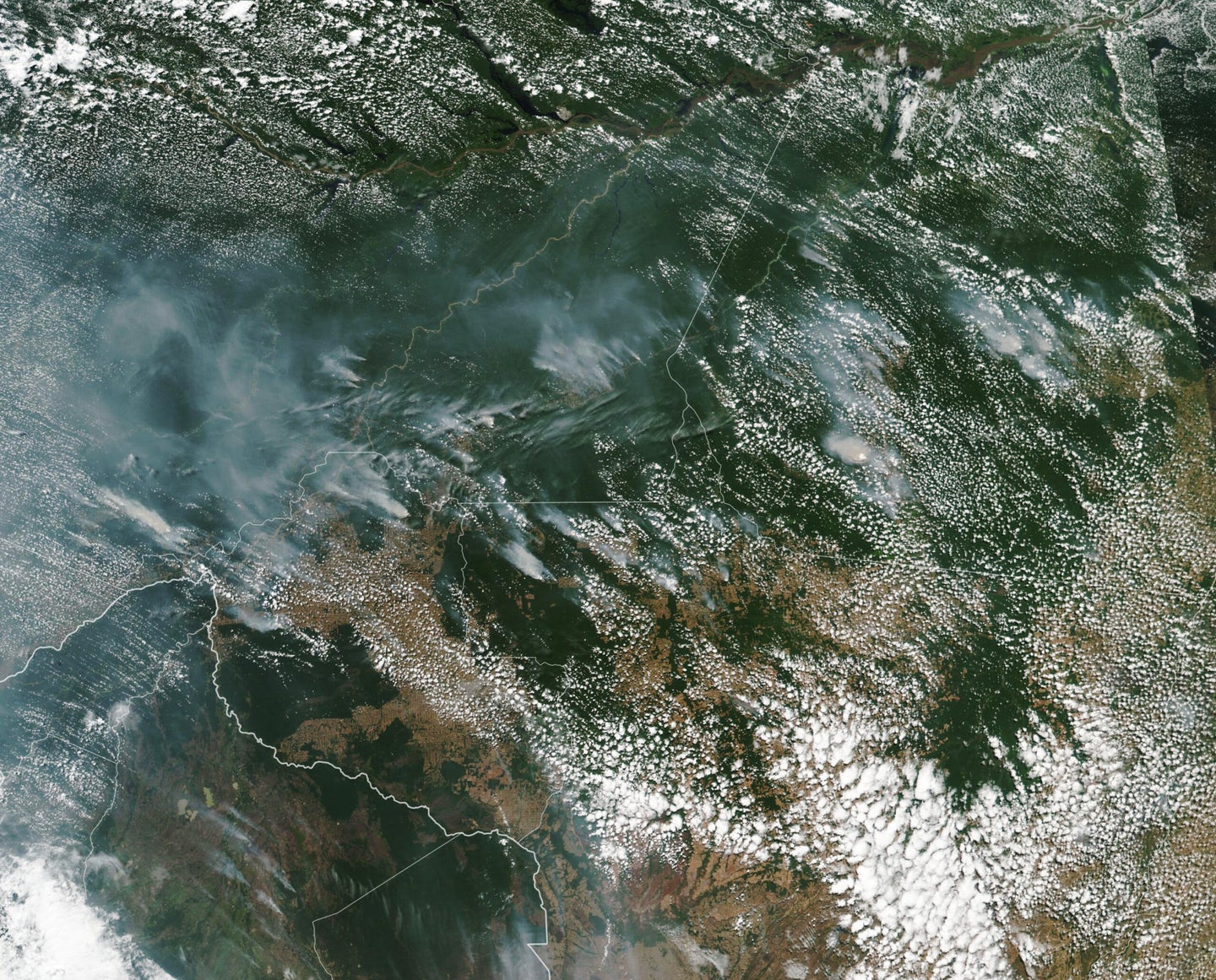The Amazon stores tons of carbon. Climate change-fueled wildfires could ruin that.
Deforestation makes drought-stressed forests even more vulnerable.

Last year, tens of thousands of fires raged in the Amazon, much of them the result of clearing and burning land to make way for agriculture. While the vast footprint of those fires was devastating to the people and wildlife that depend on the rainforest, a new study in Science Advances warns things could get much worse.
“If 2019 had been a drought year, we probably would have had a very, very, very big disaster,” says Paulo Brando, an ecosystem scientist at the University of California, Irvine. The 2019 fires largely did not move into primary forest and were confined to areas near deforested patches, because those larger swaths of forest had moist understories that resist catching ablaze.
But as the Amazon rainforest, particularly the southern part in Brazil, gets drier and warmer with climate change, it could lose that natural resilience. As the rainforest struggles under increased heat and less moisture, stressed plants drop leaves and branches to create more a flammable understory. At the same time, deforestation could make this ecosystem even more vulnerable to intense blazes.
A more flammable Amazon threatens the entire planet’s ability to fight climate change, as all those tropical plants represent a quarter of the land’s ability to store carbon from the atmosphere. So Brando and his colleagues tried to quantify what the coming firestorm means for this important carbon sink.
To figure it out, he used a model to simulate how deforestation and warming will interact in fueling fires in the southern Brazilian Amazon. In the simulation, Brando included scenarios with and without deforestation, and under two emissions pathways: a low emissions scenario used by the International Panel on Climate Change, and another IPCC scenario that tracks with our current rate of emissions. The forest in the model was based on a real-life experimental plot in the region, where researchers have used controlled burns to test how flammable the forest is in normal and drought years.
With continued warming and deforestation, the analysis found that 16 percent of the southern Brazilian Amazon could burn by 2050, releasing up to 17 billion metric tons of carbon dioxide. The finding is the same even with the low emissions scenario, and would turn the region from a carbon store—sequestering more from the air in leaves and branches than it releases back—into a carbon source. In the model, the wildfires are mostly limited to drought years, when conditions are dry enough for them to spread widely. And it will be harder for those burned areas to regrow after a fire, since the thirsty and heat-stressed seedlings will struggle to take root.
But the study estimates that without deforestation, these potential burned areas could be reduced by 30 percent, and greenhouse gas emissions cut by 56 percent. Not only is this due to the fires people light in the process of clearing rainforest, but also because of the exposed forest edges that deforestation creates. Brando says those edges become vulnerable areas where human activities could ignite a fire. When there are more forest areas adjacent to farms, roads, and cities, there’s a greater risk of people—intentionally or unintentionally—starting a fire along those borders. Brando explains that it’s similar to melting a large volume of ice in water in one block versus many smaller cubes; just as in the latter situation the ice melts faster, a forest with many chunks catches on fire easier.
However, continued deforestation in the model eventually makes the forest too fragmented to spread a fire. That’s why later in the simulation the forests in protected areas and indigenous lands become more likely to burn than the unprotected areas.
To avoid future fires on the scale of those raging in Australia, Brando says we need to prepare now for a more flammable Amazon. “Reducing deforestation sharply can be a huge part of the solution,” he says.
As if the results aren’t scary enough, they might actually be conservative estimates. Brando based the deforestation rates on those between 2004 and 2014, when deforestation was slowing down. In recent years, it’s picked back up. “Our deforestation rates are actually much more conservative than the current one,” says Brando. “The 2019 path could set up for even more [wildfires].”
